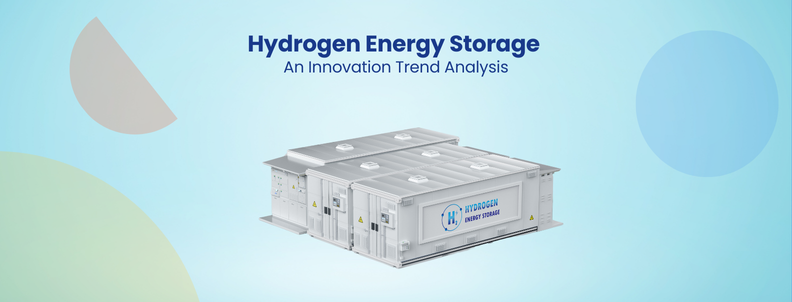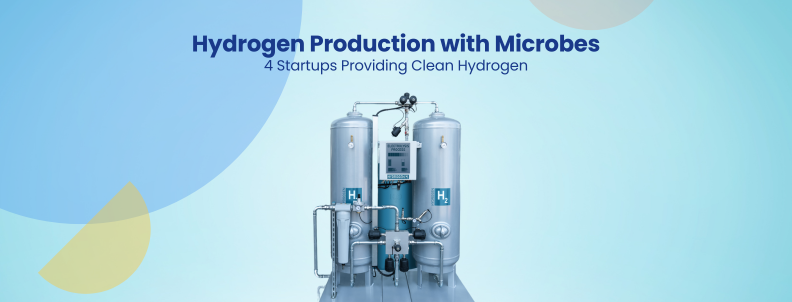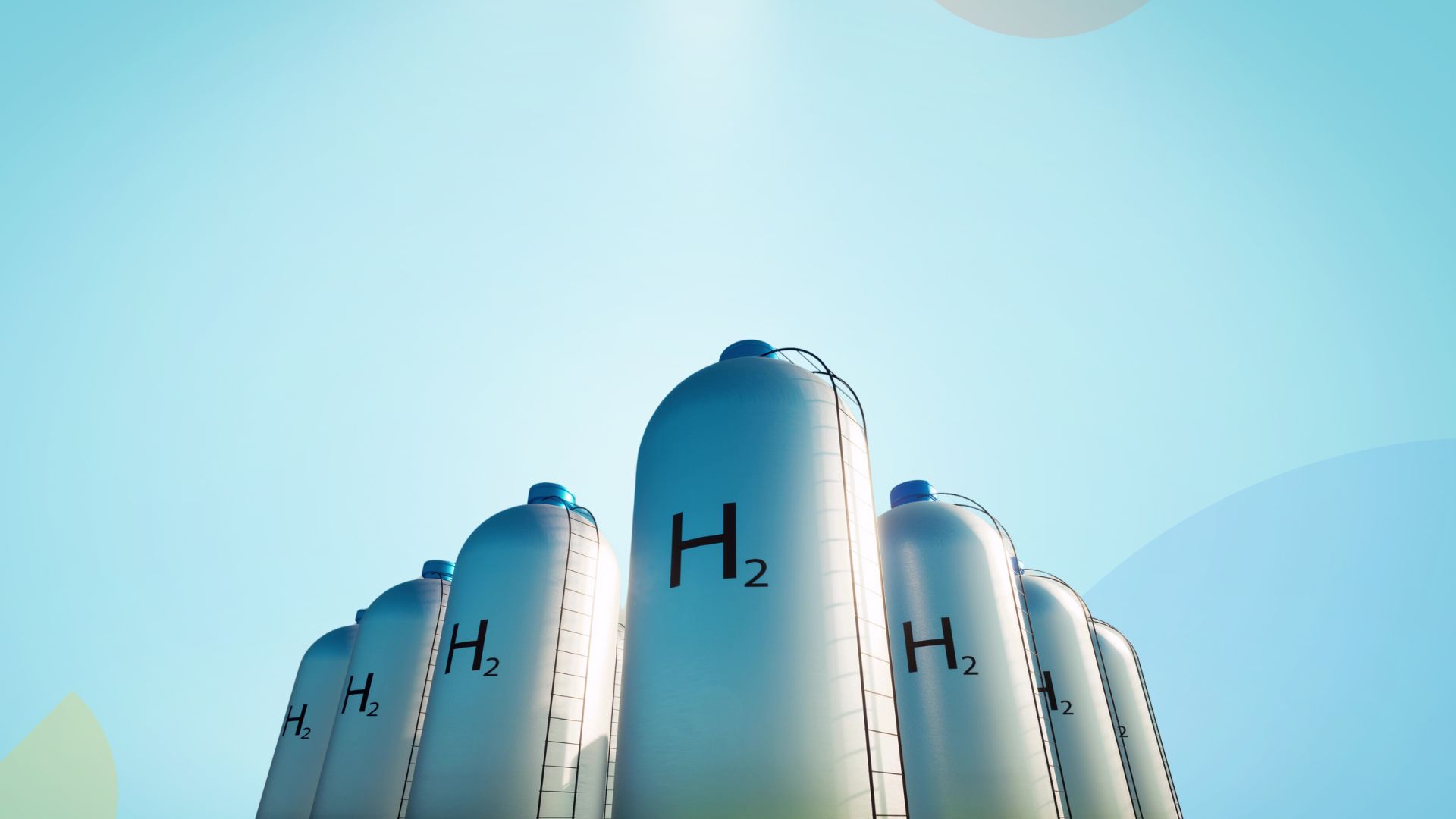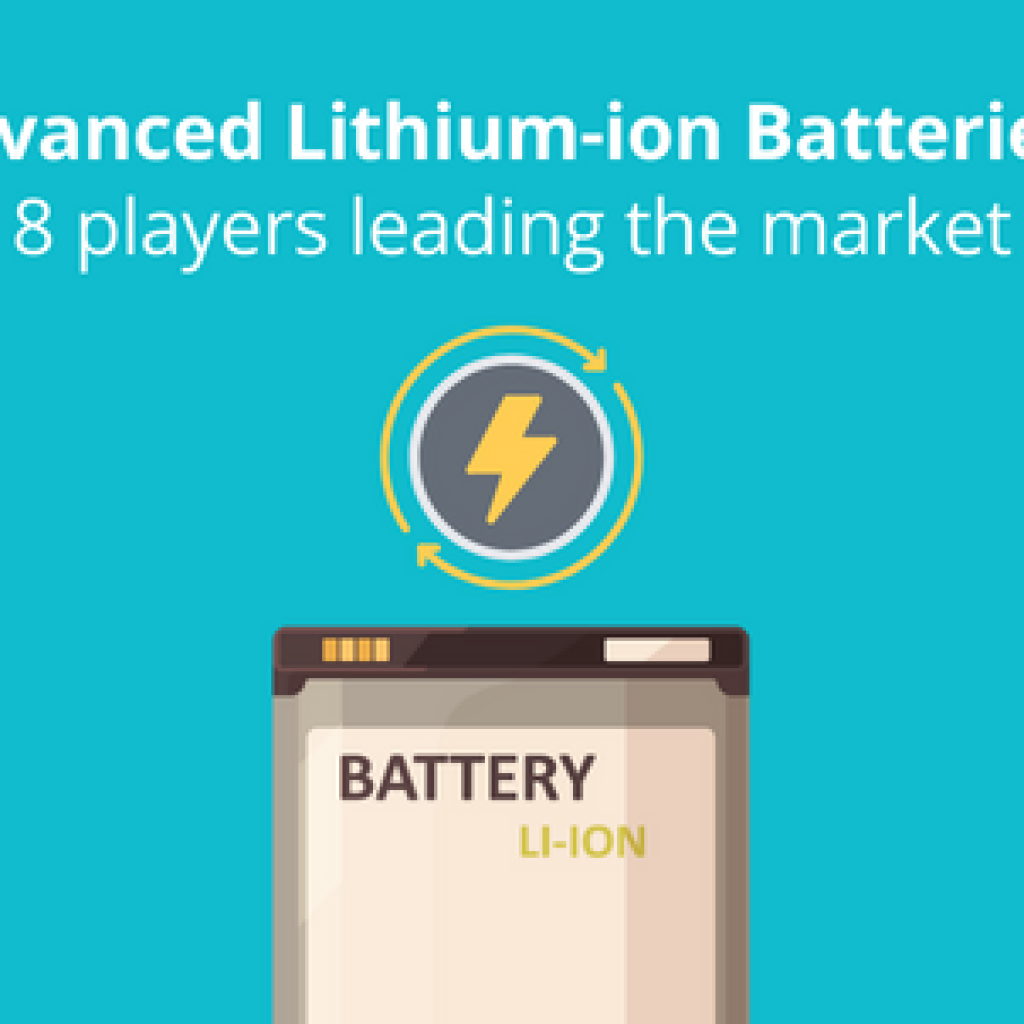Various industrial applications such as glass, fertilizer, metal refining, and chemical manufacturing employ Hydrogen technology. This is because all of these businesses have an urgent need to reduce their carbon footprints as a result of environmental regulations and customer preferences.
The rapid industrialization of developing countries, as well as the increased adoption of alternate kinds of energy, are driving the market expansion of hydrogen storage systems. Among the primary objectives intended by the government are the development and building of cost-effective and energy-saving hydrogen plants around the country.
In 2021, the global hydrogen energy storage market was valued at $14.69 billion, and it’s expected to grow and reach $21.64 billion by 2030. The market is expected to increase at an approximate CAGR of 4.4% during the forecasted period.
Global Hydrogen Energy Storage Market Size during 2021-2030 ($Billion)

Hydrogen energy storage systems have great market potential, and many companies are ready to grab their share of profits. But like any other solution, hydrogen energy storage also comes with many challenges alongside the benefits. Let’s discuss them in brief.
Here’s an exhaustive report on Innovation Trends in Energy Storage. Get the report in your inbox by filling out the form below:

Advantages of Using Hydrogen Energy Storage
Enabling greater incorporation of renewable energy generation — While collecting the renewable power inputs from RES, hydrogen, as a kind of energy storage, can offer fuel for creating electricity or heat or fueling an automobile.
The stored hydrogen can be used to generate electricity or in other energy-intensive sectors such as the gas grid, transportation as a fuel, and industrial activities.
Hydrogen storage is not limited by region and can transfer limited renewable generation into other energy-intensive sectors.
Challenges of Hydrogen Energy Storage
High capital cost of the liquid — Hydrogen energy storage is more costly than fossil fuel. The majority of these hydrogen storage technologies are in the early development stages. The quantity of energy that fuel cells can create from hydrogen and then use to meet the needs of commercial and residential buildings is exceedingly low. Due to the high insulation expenses required to prevent vaporization, the market for storing hydrogen energy in liquid form has significant capital expenditures. Hence, the time and cost of charging and discharging hydrogen in these systems and the process expenses are substantial.
Strict government regulations — Stringent government rules governing hydrogen production by electrolysis have been hindering the expansion of the worldwide hydrogen energy storage sector. Several areas prohibit the manufacture and application of hydrogen. The manufacturing process can endanger the lives of those who work in factories.
Let’s see which companies are working on this hydrogen energy storage technology.
Hydrogen Energy Storage Companies
1. ITM Power
ITM Power, based in England, designs and produces electrolyzer systems that generate green hydrogen using proton exchange membrane (PEM) technology.
The company electrolyzers are fueled by renewable energy and employ market-leading PEM technology to produce the purest green hydrogen on the market. It believes this is the most effective strategy for helping the world decarbonize and attain net-zero emissions.
The product portfolio includes HGAS1SP (smallest containerized PEM electrolyzer system of ITM Power), HGAS3SP (medium-sized containerized PEM electrolyzer), 3MEP CUBE (for large hydrogen production), and 2 GEP Skid (5 MW capacity), etc.
HGAS3SP (Medium Sized Containerized PEM Electrolyzer)

2 GEP Skid (Two Stack Modules With 5 MW Capacity)

Mergers, Acquisitions, and Collaborations
In 2021, ITM Power plc announced its intention to raise at least £52.0 million (before expenses) through-
(i) A strategic investment of £38.0 million at 40 pence per share by Linde UK Holdings No. 2 Limited and
(ii) a conditional placing of £14.0 million at 40 pence per share with certain existing and new institutional investors.
The Group has also formed a 50/50 joint venture with Linde (the Joint Venture). This is to focus on delivering green hydrogen to large-scale industrial projects. Primarily those with installed electrolyzer capacities of 10 Megawatts or more.
2. Air Liquide
Air Liquide, headquartered in Paris, is a global leader in gases, technology, and services for industry and healthcare. The Group’s specialized electrolysis process produces hydrogen from the disintegration of water. In 2021, Air Liquide completed the world’s largest PEM (Proton Exchange Membrane) electrolyzer, equipped with CUMMINS technology, marking a significant step forward in the Group’s commitment to creating low-carbon hydrogen on an industrial scale.
The collection of CO2 during the steam methane reforming process is a critical issue throughout the hydrogen production process, to which Air Liquide has developed a unique solution: CryocapTM. Subsequently, other industrial operations can store or reuse this carbon on a large scale.

Merger & Acquisitions
In 2019, Air Liquide announced that Airgas had signed a definitive agreement to acquire TA Corporate Holdings, Inc. (Tech Air). This agreement, which is subject to antitrust approval in the United States, would allow Airgas to improve its distribution network in the United States with a complementary footprint to serve customers better while producing considerable efficiencies.
In 2021, Air Liquide completed the acquisition of Sasol’s 16 Air Separation Units (ASU) in Secunda, South Africa. The company would run this facility, the world’s largest oxygen production site, to reduce CO2 emissions by 30% to 40% over the following ten years. The first investment was estimated to be over 8 billion South African Rand (circa 480 million euros). Air Liquide Large Industries South Africa (ALLISA) would run the 16 ASUs, which have a total installed capacity of 42,000 tons daily.
3. Cummins Inc.
Headquartered in the United States, Cummins Inc. is a significant player in battery, fuel cell, and hydrogen-generation technology. Cummins’ PEM electrolyzers are among the most efficient on the market and can generate greener, renewable hydrogen. The business also provides alkaline electrolyzers with proven performance and dependability for smaller-scale hydrogen output.
The HySTATTM and HyLYZERTM on-site hydrogen generators from Cummins are the results of years of continual performance, flexibility, quality, and durability improvement. Cummins’ advanced modular electrolyzers deliver high-purity hydrogen with secure, easy operations, low maintenance, and international support from installation to start-up.


Important Collaborations
The company announced in 2022 that it had completed its acquisition of Meritor, Inc. for $3.7 billion. Meritor is a prominent global supplier of commercial vehicle and industrial drivetrain, mobility, brake, service, and electric powertrain solutions. Meritor’s acquisition also brings products to Cummins’ components business that present strong growth potential throughout the Company’s portfolio of power solutions and applications.
Cummins Inc. and Daimler Truck North America (DTNA) collaborated in 2022 to retrofit and validate Freightliner Cascadia vehicles with a Cummins hydrogen fuel cell powertrain for usage in North America. The company’s fourth-generation fuel cell powertrain would be used by Freightliner, which promises greater power density, efficiency, and longevity. The collaborative effort would help both firms meet their aim of reducing emissions across their product lines and operations. Following successful validation, the businesses plan to have initial units available for chosen clients in 2024.
Innovative Hydrogen Energy Startups
4. GKN Hydrogen
GKN Hydrogen is a pioneering company in hydrogen storage and power-to-power solutions. They specialize in creating robust, safe, and economical hydrogen storage systems using metal hydride technology.
This technology enables efficient hydrogen storage in a compact and low-pressure form, significantly enhancing safety and reducing the footprint compared to traditional high-pressure hydrogen storage methods.
GKN Hydrogen’s products include scalable storage solutions like the 250kg H2 storage units and fully integrated power-to-power systems that offer up to 100kW output with scalable MWh duration.

Its Nomad-H Mobile Refueler is another innovative product designed for transitional hydrogen refueling. It can adapt to various fuel profiles and provide high-yield vehicle dispensing.
Latest Collaboration, Merger, and Acquisitions
GKN Hydrogen and ZYNP signed a Memorandum of Understanding (MoU) on June 11, 2024. This partnership positions ZYNP as the exclusive partner for GKN Hydrogen in the Chinese market. The collaboration leverages ZYNP’s strategic customer resources and GKN Hydrogen’s technological expertise to promote the adoption of metal hydride-based hydrogen storage systems, enhancing China’s hydrogen energy supply chain.
GKN Hydrogen and the Dowlais Group collaborated on April 20, 2023. This reorganization involved the demerger of GKN Hydrogen, GKN Automotive, and GKN Powder Metallurgy from Melrose Industries PLC into the newly formed Dowlais Group.
GKN Hydrogen and Proton Motor Fuel Cell GmbH are strategic partners to enhance hydrogen energy solutions using their technologies. This collaboration, announced in 2023, combines GKN Hydrogen’s advanced storage systems with Proton Motor’s expertise in fuel cell technology, aiming to create more efficient and sustainable power solutions.
GKN Hydrogen and Mitsubishi Corporation Technos signed a MoU On December 4, 2023, in Tokyo, Japan. This partnership aims to market GKN Hydrogen’s metal hydride solutions in Japan. The collaboration focuses on decarbonizing Japanese infrastructure and industrial facilities, including decentralized, grid-independent energy supplies in residential areas, CO2-neutral emergency power supplies for hospital data centers, and charging infrastructure for electric vehicles.
5. ARIEMA
ARIEMA, a pioneering Spanish technology company founded in 2002, is renowned for its expertise in hydrogen and fuel cell technology. As the oldest Spanish company in this sector, ARIEMA boasts its proprietary electrolysis technology, which is central to its range of innovative hydrogen solutions.
The company engages in various projects focusing on decarbonization, renewable energy, and sustainable mobility, supported by significant R&D initiatives and public-private collaborations across Spain and Europe.
Its hydrogen projects include developing metal hydride storage systems, a Portable Hydrogen Refueling Station for UAVs, a feasibility study of the electrolysis process using seawater, etc.
ARIEMA’s product lineup starts with advanced electrolyzers for hydrogen production, fuel cells, PEMs (Proton Exchange Membrane), and other hydrogen production, transport, storage, and use equipment.

The company also provides consultancy services (Strategic and project technical consultation) for hydrogen infrastructure and specialized training programs.
ARIEMA contributes to high-profile projects such as the “ValorH2” initiative, which aims to enhance hydrogen technologies across its value chain, and the “Iron NPE” project under the Airbus ZEROe initiative, which focuses on renewable hydrogen fuel cells for non-propulsive energy systems.
In these projects, it partners with organizations like Aciturri, Adisseo, Ariema, Desmasa, DHG Group, Hiperbaric, and mTorres. National governments and organizations like CDTI and the Ministry of Science and Innovation back these projects.
ARIEMA also manages the technical secretariat of the Spanish Hydrogen Association (AeH2) and Hydrogen TCP. It handles their meetings, seminars, presentations, technological documentation, research, development, and innovation.
Startups are also competing with these major hydrogen energy storage industry players. Let’s see how far they’ve come.
Hydrogen Energy Storage Startups
1. NPROXX
NPROXX, based in the Netherlands, is a well-known player in high-pressure hydrogen storage for stationary and mobile applications. The company is recognized for designing, producing, and manufacturing Type 4 pressure vessels for high-pressure hydrogen storage.
NPROXX’s CFRP Type 4 pressure vessels can be utilized for up to 30 years without needing to be replaced, which is twice the estimated life duration of Type 1 and Type 2 vessels. The pressure vessels of Type 4 have nominal working pressures of 350 bar, 500 bar, and 700 bar.

Important Collaborations
NPROXX formed a joint venture with Cummins Inc., one of the major companies in the domain, for hydrogen storage tanks in 2020. The joint venture would provide customers with hydrogen and compressed natural gas storage products for on-highway and rail applications.
The joint venture expands Cummins’ fast-increasing hydrogen capabilities. It is one of last year’s numerous moves to improve the company’s fuel cell and hydrogen production technologies capabilities.
2. GRZ Technologies
GRZ Technologies, headquartered in Switzerland, manufactures hydrogen-based power-to-power solutions and thermochemical hydrogen compressors. Its goal is to store large amounts of renewable energy and enable 100% sustainable energy in the future.
The company’s DASH Storage Modules are solid-state hydrogen storage technologies. Therefore, they allow hydrogen storage within a unique metallic framework in solid, atomic form.

Important Collaborations
In 2020, Burckhardt Compression collaborated with GRZ Technologies to create a new hydrogen compression technology. It would be used in hydrogen fuel stations, hydrogen energy storage systems, and other applications using thermal active metal hydrides.
3. Hydrogen Energy Technology Co., Ltd.
China-based Hydrogen Energy Technology tackles hydrogen storage safety, cost, and energy issues by using aromatic heterocycles as carriers for reversible hydrogen storage and release. Based on autonomous catalytic processes, this technique allows for safe, large-scale, cost-effective hydrogen storage and transportation.
The startup’s innovative approach includes creating skid-mounted hydrogen storage and discharge pilot equipment. These equipments can handle 10 m³/h to facilitate the practical application of this technology.
Unlike high-pressure or cryogenic storage methods, aromatic heterocycle-based storage enables hydrogen storage at ambient conditions.
This technology reduces the risks associated with high-pressure systems and improves storage density.
The startup raised CN¥100M in its last Series A funding round on 1st November 2023. Shenzhen Guozhong Venture Capital Management led it.
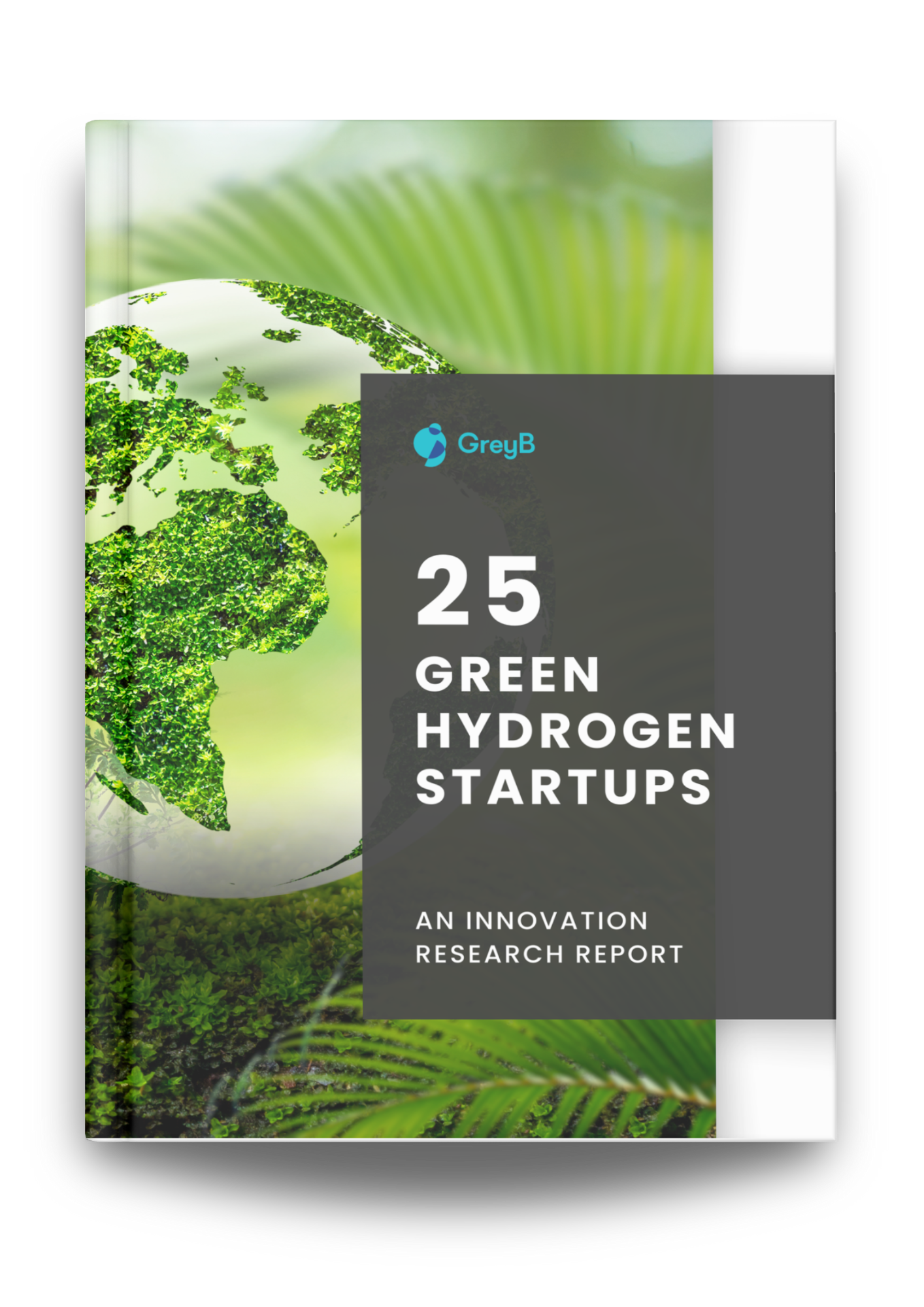
Green Hydrogen Startups Report
Download Report4. KONTAK
KONTAK, situated in the United States, is a pioneer in the new field of HOLC – Hydrogen on Liquid Carriers. Their products, procedures, and strategies are designed to provide safe, abundant, and affordable hydrogen.
The startup provides a 5kW bundled backup solution for cell towers in areas with unreliable main power. A range of fuel quantities can be supplied depending on the need for continuous backup times and the desired time between refills.

5. HySiLabs
HySiLabs, headquartered in France, is developing a method to simplify hydrogen transport and storage by charging it in a safe liquid carrier. Hydrogen is infused into HydroSil, a stable, non-toxic, and non-explosive liquid silicon hydride derivative. HydroSil has a long storage life and is classified as a non-hazardous good. The gas is then released on demand at the consuming location. This method, which allows using existing fossil fuel infrastructure, revolutionizes the hydrogen transport sector.
With a total of 70 patents in its portfolio, the startup has a potential future in the domain.

Hydrogen as an energy storage system has many benefits, but first, companies and governments must work on solving its main challenges.
China has already announced its long-term hydrogen plan to produce 100,000 to 200,000 tons of renewable-based hydrogen annually and have a fleet of 50,000 hydrogen-fueled vehicles by 2025.
China is the highest producer of Hydrogen and ranks third in Fuel Cell EVs. As China produces the highest renewable hydrogen, the market for fuel cell EVs will shoot up.
The Indian government and Reliance Industries, and Adani Group also announced plans and investments in Hydrogen energy to use it for different industries.
Going forward, it will be interesting to see the growth and market trends of hydrogen storage and how it influences the energy storage sector.
GreyB specializes in helping businesses navigate the complexities of innovation and intellectual property.
Partnering with a team like GreyB’s ensures you uncover growth opportunities, safeguard your IP, and stay ahead in today’s competitive landscape. Our deep expertise in technology scouting, competitive analysis, and market research empowers you to make informed decisions confidently.
We don’t just offer insights—we provide actionable strategies tailored to your unique needs, ensuring your innovation efforts are protected and strategically aligned with the future.
At GreyB, the complexities of staying ahead in today’s innovation landscape are well understood. We’re passionate about treating your challenges as our own, and our mission is to uncover the most valuable opportunities for your business.
To see how we’ve helped other companies thrive, visit our case studies page or reach out to explore how we can collaborate on your next big move.
How Can We Help You?
We support industry-leading R&D and Innovation professionals through complex problems. Describe your challenge, and let us bring clarity and expertise.

